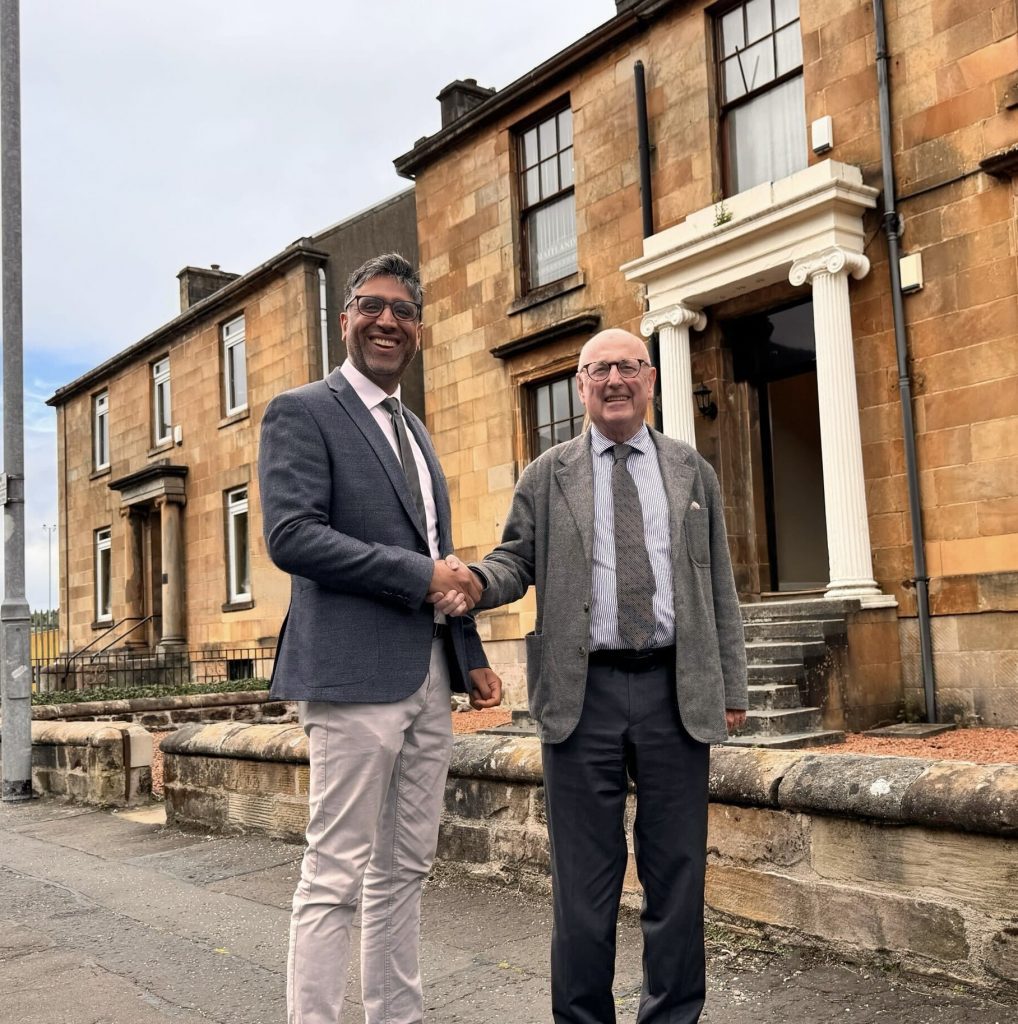Scotland’s system of recording land ownership is unique, historic, and undergoing one of the most significant transitions in its legal history. For centuries, the Sasine Register formed the bedrock of property registration. Today, however, Scotland is steadily progressing toward a fully digital, map-based Land Register under the stewardship of Registers of Scotland (RoS).
In this article, we outline the purpose and legacy of the Sasine Register, as well as the practical implications of migrating to the modern Land Register.
What Is the Sasine Register?
Established in 1617, the General Register of Sasines is the world’s oldest national land register. It was created by the Registration Act 1617 to record deeds that transferred or affected real rights in land (e.g. disposition, standard security).
The term “Sasine” refers to the symbolic act of giving possession of feudal land, historically marked by handing over a piece of earth or stone. Over time, this physical ceremony was replaced by the registration of a written deed narrating that the transaction had taken place.
Key Characteristics of the Sasine Register
• Deed-based system: It records the deed, not the property. There is no spatial (map-based) reference.
• Narrative descriptions: Properties are identified by textual descriptions, which can be vague or difficult to interpret.
• Cumulative nature: Title investigations require examining multiple historic deeds to establish ownership and burdens.
• No state guarantee of title: Buyers rely heavily on solicitor due diligence.
• Despite its historical importance, the Sasine system has become increasingly unfit for the needs of a modern property market that demands certainty, clarity, and speed.
The Land Register: Scotland’s Modern Alternative
In contrast, the Land Register of Scotland, introduced by the Land Registration (Scotland) Act 1979 and modernised by the Land Registration etc.(Scotland) Act 2012, is a plan-based register that provides a state-backed, guaranteed title.
Key Features:
• Map-based (Ordnance Survey): Each registered property is linked to a precise cadastral map, making it visually identifiable.
• Title sheet system: Each title is assigned a unique title number and has a corresponding title sheet including:
1) Property section (description and boundaries)
2) Proprietorship section (ownership)
3) Securities section (standard securities/mortgages)
4) Burdens section (e.g. servitudes, conditions)
5) State-backed warranty: The Keeper of the Registers guarantees the title’s accuracy, subject to certain exceptions.
6) Digital registration and searching: Enhanced transparency and efficiency in conveyancing.
Why Transition from Sasine to Land Register?
The move from Sasine to Land Register is part of a strategic policy goal to create a comprehensive, modern land register for Scotland. The Scottish Government has mandated completion of the Land Register by the end of 2024 (extended in practice), although full migration is still ongoing.
Benefits of Transition:
• Clarity of ownership: Elimination of ambiguous deed descriptions improves certainty over legal boundaries.
• Faster transactions: Title investigations are more efficient with a single, up-to-date title sheet.
• Digital access: Simplified searching and integration with other datasets (e.g. planning, tax).
• Public confidence: The state-backed warranty reduces transactional risk.
• Support for land reform: Mapping ownership facilitates accountability and transparency in who owns Scotland’s land.
How Are Properties Moved to the Land Register?
There are several mechanisms by which Sasine titles are migrated to the Land Register:
1. Trigger Events (Voluntary and Compulsory First Registrations). First Registration (FR) occurs when a property is transferred for value, granted a standard security, or involved in another registrable event under the 2012 Act. This triggers mandatory entry into the Land Register if the property is still on Sasine.
2. Voluntary Registration. Proprietors may voluntarily register a Sasine title. RoS offers reduced fees as an incentive. Particularly beneficial for landowners, developers, and public bodies.
3. Keeper-Induced Registration (KIR). Introduced by the 2012 Act, this allows the Keeper of the Registers to register Sasine titles proactively, without the owner’s application. Used selectively, especially for public land, housing associations, and major estates.
Legal Considerations During the Transition
For solicitors and conveyancers, the transition introduces several technical and practical considerations:
1. Due Diligence:
The root of title tracing is complex in Sasine cases and must be carefully analysed. When moving to Land Register, mapping accuracy is crucial as errors in plans can affect boundaries and title sheet content.
2. Mapping and Title Extent:
Any discrepancy between Sasine deeds and actual occupation can lead to title extents issues. Use of professional land surveyors and RoS pre-registration checks is advised.
3. Burdens and Conditions:
Identifying and accurately mapping servitudes, burdens, and real conditions is essential. Burdens in Sasine deeds may require re-construction in Land Register-compatible form.
4. Advance Notices:
Under the 2012 Act, advance notices protect purchasers during the 35-day period prior to registration, preventing competing deeds from prejudicing the transaction.
Preparing for the Land Register Future
For clients, particularly first-time buyers or those acquiring rural properties or estates, understanding the nature of title, whether Sasine or Land Registered, is essential. At Kaur Sutherland Conveyancing, we specialise in navigating these transitions with precision and legal rigour.
Claire Sutherland, Partner at the firm advises: “Whether you’re considering voluntary registration, handling a first registration, or responding to Keeper-induced changes, we’ll ensure a seamless and legally robust transition. The future of property law in Scotland is digital, mapped, and state-guaranteed, and we’re here to guide you through every step.”
Need advice on whether your property is on the Sasine Register and how to transition it?
📞 Call us: 0141 611 6000
🌐 Visit: mackaur.co.uk



